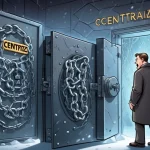Bitcoin Solaris Slashes Price to $5 in Bold Move Before LBank Listing

Bitcoin Solaris Defies the Hype: Price Rollback Amid Market Surge Before LBank Debut
With Bitcoin, Ethereum, and a slew of altcoins riding a bullish wave, the crypto market is buzzing with optimism. Yet, Bitcoin Solaris (BTC-S) is taking a sharp left turn, slashing its token price from $11 to $5 in a 72-hour rollback as a tribute to early supporters ahead of its high-stakes listing on LBank, a powerhouse in Asian crypto exchanges. This unexpected move, with an anticipated jump to $20 at launch, begs the question: genuine goodwill or slick marketing?
- Market Boom: Bitcoin and Ethereum lead a price surge, with altcoins catching the updraft on institutional and political tailwinds.
- Price Rollback: BTC-S drops to $5 temporarily, a steep discount before the expected $20 LBank debut.
- Wealth Ecosystem: BTC-S blends dual-consensus tech, mobile mining, and bold plans for scalability and security.
Market Mania Meets a Maverick Move
The crypto scene is electric right now. Bitcoin and Ethereum are smashing through resistance levels, fueled by growing institutional confidence and even whispers of political backing—rumors of President Trump signaling pro-crypto policies in 2025 have only stoked the fire. Altcoins are reaping the benefits, with investors scrambling to catch the next big thing. Amid this frenzy, Bitcoin Solaris (BTC-S) has already pocketed over $6.6 million in its presale, drawing in more than 14,150 users, marking it as one of 2025’s fastest-growing token offerings, as detailed in a recent report on cryptocurrency price surges and BTC-S’s response. With the presale window slamming shut on July 31 after a 90-day sprint, the clock is ticking for anyone eyeing that discounted $5 entry point before the LBank listing catapults visibility and liquidity in Asia’s trading hotbed.
But let’s cut through the noise. Most projects would ride this market wave with jacked-up prices to milk FOMO for all it’s worth. BTC-S, however, is hitting the brakes with a price rollback framed as a thank-you to early adopters. As their messaging boldly claims:
Bitcoin Solaris is offering something better: a strategic pause. A rollback. A real opportunity to buy low before the explosion.
It’s a refreshing slap in the face to the usual “moon soon” hype. Or is it? Could this be a calculated play to spark urgency and open wallets? Let’s dig into what BTC-S is, what it’s promising, and whether it’s worth your attention—or your skepticism.
Bitcoin Solaris Unveiled: Tech That Aims High
At its heart, Bitcoin Solaris positions itself as a wealth ecosystem built on blockchain innovation. It runs on a dual-consensus framework, marrying Proof-of-Work (PoW) for ironclad security with Delegated Proof-of-Stake (DPoS) for efficiency, a system further explored in this detailed explanation of BTC-S dual-consensus technology. For the unversed, PoW is Bitcoin’s backbone—miners burn energy solving puzzles to validate transactions. DPoS, on the other hand, is like a community-elected board, where stakeholders pick delegates to manage the network, cutting energy use and speeding things along. BTC-S boasts a two-layer setup that handles over 10,000 transactions per second, confirming them in just 2 seconds—faster than it takes to send a text. If these numbers hold, it’s a serious jab at scalability issues plaguing many blockchains.
What’s got tongues wagging, though, is their mobile-first stance. The Solaris Nova App lets anyone mine BTC-S tokens straight from their smartphone. No need for a tech dungeon of pricey rigs—just download, tap, and earn. With energy-efficient algorithms and gamified perks like team mining, it’s pitched as a gateway to crypto for the masses, with deeper insights available on mobile mining possibilities with BTC-S. Influencers like Token Galaxy have hyped this as a key to wider adoption, while Crypto Show insists it’s “more than just hype.” It’s a clever pivot from Bitcoin’s energy-hungry mining model, aligning with decentralization’s push to empower everyday users. But don’t toss your skepticism out the window—how much battery does this drain? How “green” is mobile mining really? Hard data is thin, and your phone dying mid-mine isn’t the revolution we signed up for.
Trust Signals in a Shady Space
Beyond raw tech, BTC-S is working to earn investor confidence in a market scarred by scams and rug pulls. They’ve completed smart contract audits with Cyberscope and Freshcoins, a critical step to prove they’re not cooking the books, as outlined in audit reports and credibility analysis for BTC-S. Their token breakdown also looks structured on paper:
- Mining: 66.66%—a hefty chunk for long-term distribution, but could it flood supply down the line?
- Presale: 20%—fueling early growth.
- Liquidity: 5%—ensuring trading stability.
- Remainder: Split across community rewards, marketing, staking, ecosystem expansion, and team/advisors.
That last bit—team allocation—always raises a red flag. History is littered with insider dumps that torch retail investors. Still, the transparency here passes the initial sniff test. A buzzing community on Telegram and X, plus nods from names like Crypto League, who called BTC-S a “new standard for decentralized scalability,” add to the momentum, with active discussions captured in community reactions to the BTC-S rollback. But let’s not kid ourselves—influencer endorsements often come with a paycheck. Take these with a hefty pinch of salt.
Price Rollback: Generosity or Gimmick?
The headline-grabbing rollback from $11 to $5 for 72 hours is BTC-S’s big play. It’s marketed as a reward for early believers before the price spikes to $20 on LBank. On one hand, it’s a rare chance for investors to snag a deal in a market where “buy high, pray higher” is the norm. On the other, it reeks of psychological warfare—drop the price, limit the window, and watch FOMO kick in. We’ve seen this before with altcoins circa 2021, slashing prices pre-listing only to pump and dump post-launch. Is BTC-S different, or just repackaging old tricks with a shinier bow? For those searching “is Bitcoin Solaris a scam,” the audits offer some comfort, but this tactic still warrants a hard side-eye, with further debate ongoing at Reddit discussions on BTC-S rollback.
Let’s not forget the market’s brutal volatility. Some sources toss around a 233% ROI for early investors, but I’m not here to peddle fairy tales. Crypto predictions are often plucked from thin air, and every disclaimer screams the same truth: you could lose it all. BTC-S might have tech and buzz, but it’s one fish in a sea of altcoins, many promising riches and delivering rubble.
Roadmap Dreams vs. Harsh Reality
Looking forward, Bitcoin Solaris isn’t playing small. Their roadmap teases a mining marketplace, layer-2 scaling solutions to crank up transaction capacity, quantum-resistant upgrades to guard against future tech threats, and enterprise tie-ups to root BTC-S in real-world utility. It’s ambitious as hell—think building a rocket while learning to fly. Layer-2 tech, for the newcomers, means offloading transactions to side networks to ease congestion, something even Ethereum wrestles with. Quantum resistance? That’s prepping for a day when supercomputers could crack current encryption, a frontier most blockchains only dream about. BTC-S claims they’re not just promising breakthroughs but rolling them out. But let’s be real—Google’s quantum efforts are still experimental. Is BTC-S’s timeline pure optimism, or do they have the chops to pull it off? If you’re curious about the broader context, check out the Bitcoin Solaris wiki page for more background.
Competitors and Cracks in the Armor
BTC-S isn’t alone in its niche. Pi Network pushed mobile mining hard but floundered on monetization—can BTC-S dodge that trap? EOS pioneered DPoS efficiency yet got slammed for centralization as delegates consolidated power. Will BTC-S’s system stay truly decentralized, or fall into the same pit? Then there’s regulatory quicksand. While U.S. political winds might be shifting pro-crypto, Asia’s a mixed bag. South Korea’s tight KYC rules or China’s lingering bans could kneecap LBank listings if BTC-S isn’t compliant. Just look at recent crackdowns on smaller exchanges—compliance isn’t a suggestion, it’s survival, a concern amplified by the dynamics of LBank’s impact on altcoin projects like BTC-S.
Bitcoin maximalists might scoff at altcoins like BTC-S, and fair enough—Bitcoin is king for security and store-of-value grit. But its slow transactions and energy demands leave gaps. Altcoins like BTC-S, with mobile access and speed, could onboard millions to the crypto fight against centralized finance. If they deliver, that’s the disruption we cheer for. If they flop, it’s just another shiny distraction, a risk underscored when considering the broader potential impact of the LBank listing in 2025.
Key Questions and Takeaways for Bitcoin Solaris (BTC-S)
- What sets Bitcoin Solaris apart in the crowded altcoin market?
Its dual-consensus blend of PoW and DPoS, lightning-fast transactions, and mobile mining through the Solaris Nova App bring accessibility and scalability that pure Bitcoin clones can’t match. - Is the BTC-S token price rollback a true community perk or a hype tactic?
It offers early adopters a steal at $5 before a projected $20 launch, but the tight 72-hour window could just as easily be engineered to trigger urgent buying. - Why does the LBank listing matter for BTC-S in 2025?
Landing on LBank unlocks Asia’s massive investor pool and trading liquidity, a critical boost for visibility and growth if BTC-S capitalizes on the momentum. - Can BTC-S deliver on cutting-edge promises like quantum-resistant tech?
The vision is bold, but execution is a beast—layer-2 scaling and quantum defenses are hurdles even giants like Ethereum struggle with, casting doubt on feasibility without serious resources. - What Bitcoin Solaris investment risks should you weigh?
Market swings, untested long-term tech, and regulatory minefields in key regions like Asia pose real threats; add crypto’s speculative nature, and total loss is always on the table.
Bitcoin Solaris is staking its claim with a cocktail of innovation and community nods, daring to defy the market’s greed-driven playbook. The price rollback could forge loyalty—or flop as a transparent gimmick. Its mobile mining and scalability align with the ethos of decentralization, a cause worth championing as it could pull the masses into crypto’s orbit. But let’s not get dazzled. Crypto’s graveyard is packed with bright ideas that dimmed fast. BTC-S shows potential to be a contender if it executes, but tread carefully—keep your hype in check, your research thorough, and your wallet guarded. This is a project to monitor closely, not blindly worship.



